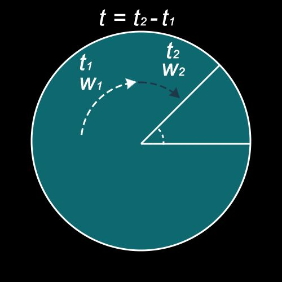Angular acceleration is a fundamental concept in physics that is often used to describe the rate at which an object's angular velocity changes over time. While linear acceleration refers to the rate of change of an object's linear velocity, angular acceleration specifically refers to the rate of change of an object's angular velocity.
Angular acceleration is defined as the rate of change of angular velocity with respect to time. In other words, it is a measure of how quickly an object's rotational speed is changing. If an object's angular velocity is changing, it must be experiencing an angular acceleration.

Angular acceleration is important in many fields, including physics, engineering, and astronomy. In physics, it is used to describe the rotational motion of objects, such as the rotation of a wheel or the orbit of a planet. In engineering, it is used to design and analyze rotating machinery, such as turbines and engines. In astronomy, it is used to describe the motion of celestial bodies, such as the rotation of the Earth or the orbit of a comet.
One key difference between linear acceleration and angular acceleration is that linear acceleration is measured in units of meters per second squared (m/s²), while angular acceleration is measured in units of radians per second squared (rad/s²). Another difference is that linear acceleration is a measure of how quickly an object's velocity is changing in a straight line, while angular acceleration is a measure of how quickly an object's rotational speed is changing around an axis.
Some of the frequently used units of measurements for angular acceleration include revolutions per second squared (rev/s²), degrees per second squared (deg/s²), and radians per second squared (rad/s²). The most common unit, however, is radians per second squared, which is used in most scientific and technical applications.
Having learned what angular acceleration is, why not put your knowledge into practice by trying some calculations using our handy angular acceleration calculators?

